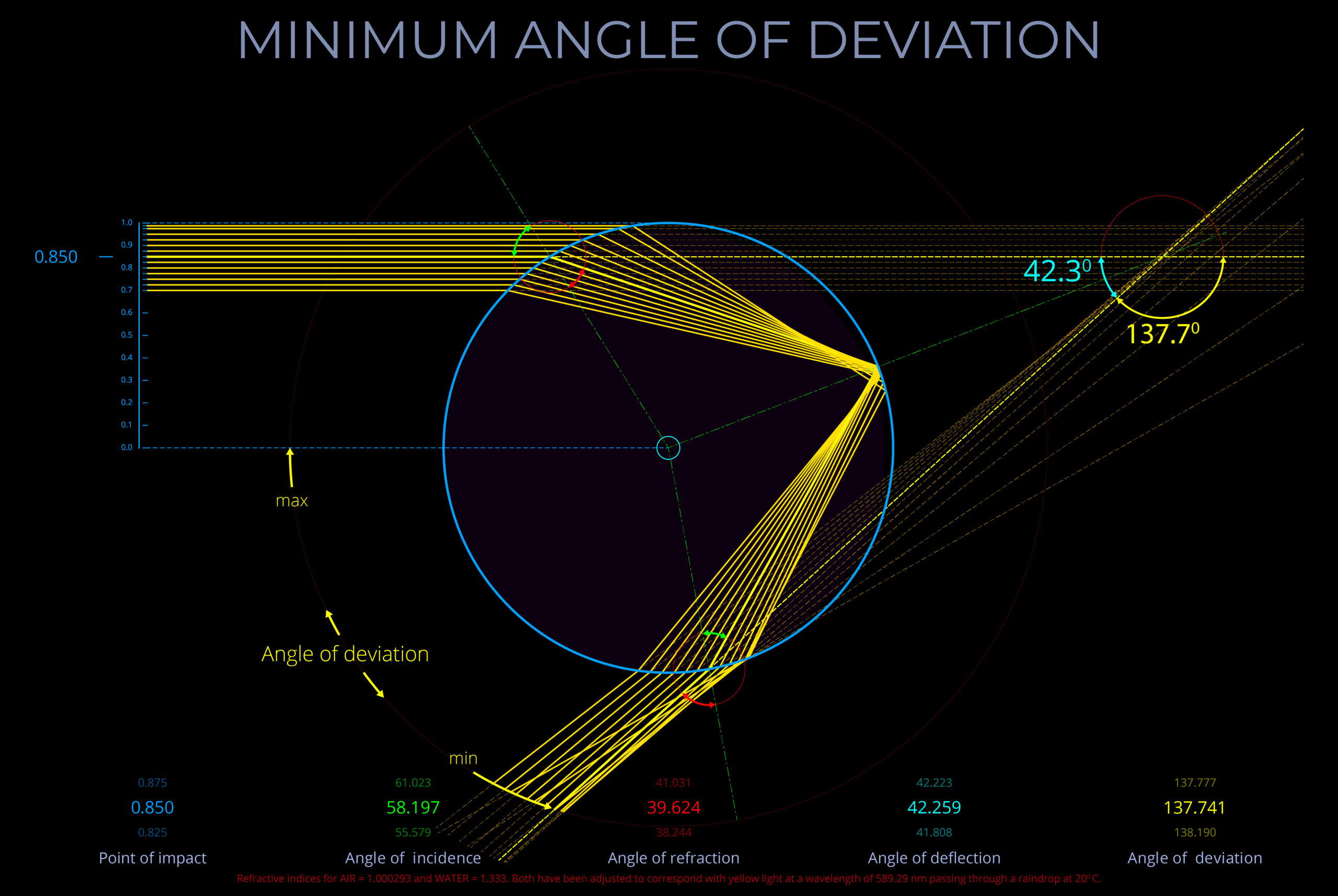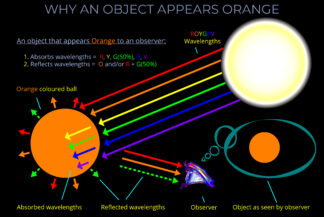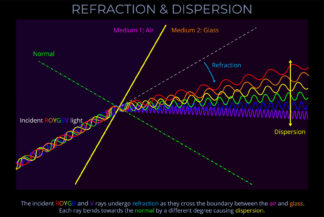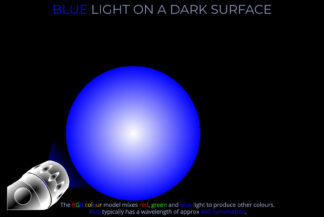Minimum Angle of Deviation
£0.00
This is one of a set of almost 40 diagrams exploring Rainbows.
Each diagram appears on a separate page and is supported by a full explanation.
- Follow the links embedded in the text for definitions of all the key terms.
- For quick reference don’t miss the summaries of key terms further down each page.
Description
Minimum Angle of Deviation
TRY SOME QUICK QUESTIONS AND ANSWERS TO GET STARTED
About the diagram
About the minimum angle of deviation
The minimum angle of deviation of a ray of light of any specific wavelength passing through a raindrop is the smallest angle to which it must change course before it becomes visible within the arcs of a rainbow to an observer.
- Any ray of light (stream of photons) travelling through empty space, unaffected by gravitational forces, travels in a straight line forever.
- When light travels from a vacuum or from one transparent medium into another, it deviates from its original path (and changes speed).
- The more a ray changes direction the greater its angle of deviation.
- A ray reflected directly back on itself has an angle of deviation of 1800 – the maximum possible angle of deviation.
- It is the optical properties of air and raindrops that determines the angle of deviation of any ray of incident light.
- It is the optical properties of raindrops that prevent any ray of visible light within the visible spectrum from exiting a raindrop towards an observer at an angle of deviation less than 137.60.
- The angle of deviation and the angle of deflection are directly related to one another and together always add up to 1800.
- The angle of deviation and the viewing angle are always the same.
More about the minimum angle of deviation
- The optical properties of an idealised spherical raindrop mean that no light of any particular wavelength can deviate at less than its minimum angle of deviation.
- The minimum angle of deviation of visible light depends on its wavelength.
- The minimum angle of deviation for red light with a wavelength of approx. 720 nm is 137.60 but similar rays of the same wavelength but with other impact parameters can deviate up to a maximum of 1800.
- Different colours have different minimum angles of deviation because the refractive index of water changes with wavelength.
Impact parameter and minimum angle of deviation
- To form a primary rainbow, incident light must strike each raindrop above its horizontal axis.
- Rays of incident light of a single wavelength strike a raindrop at every possible point on the side of a raindrop facing the Sun.
- Only those that strike above the horizontal axis contribute to a primary rainbow.
- Points of impact of incident light striking a droplet can be measured on an impact parameter scale.
- It is the point of impact of rays of incident light of the same wavelength that is the variable factor that determines their subsequently different paths.
- Rays that strike nearest the horizontal axis, so with a value near 0.0 on an impact parameter scale have the largest angles of deviation.
- Rays that strike farthest away from the horizontal axis (near the topmost point on an impact parameter scale and so near 1.0) also have a large angle of deviation.
Some key terms
The angle of refraction measures the angle to which light bends as it passes across the boundary between different media.
- The angle of refraction is measured between a ray of light and an imaginary line called the normal.
- In optics, the normal is a line drawn on a ray diagram perpendicular to, so at a right angle to (900), the boundary between two media.
- See this diagram for an explanation: Refraction of a ray of light
- If the boundary between the media is curved, the normal is drawn perpendicular to the boundary.
When discussing the formation of rainbows, the angle of deflection measures the angle between the initial path of a light ray before it hits a raindrop, and the angle of deviation, which measures how much the ray bends back on itself in the course of refraction and reflection towards an observer.
- See this diagram for an explanation: Rainbow anatomy
- The angle of deflection and the angle of deviation are always directly related to one another and together add up to 180 degrees.
- The angle of deflection equals 180 degrees minus the angle of deviation. So, it’s clear the angle of deviation is always equal to 180 degrees minus the angle of deflection.
- In any particular case, the angle of deflection is always the same as the viewing angle because the incident rays of light that form a rainbow all follow paths that run parallel with the rainbow axis.
The angle of reflection measures the angle at which reflected light bounces off a surface.
- The angle of reflection is measured between a ray of light which has been reflected off a surface and an imaginary line called the normal.
- See this diagram for an explanation: Reflection of a ray of light
- In optics, the normal is a line drawn on a ray diagram perpendicular to, so at a right angle to (900), the boundary between two media.
- If the boundary between the media is curved then the normal is drawn perpendicular to the boundary.
The angle of incidence measures the angle at which incoming light strikes a surface.
- The angle of incidence is measured between a ray of incoming light and an imaginary line called the normal.
- See this diagram for an explanation: Reflection of a ray of light
- In optics, the normal is a line drawn on a ray diagram perpendicular to, so at a right angle to (900), the boundary between two media.
- If the boundary between the media is curved, then the normal is drawn at a tangent to the boundary.



